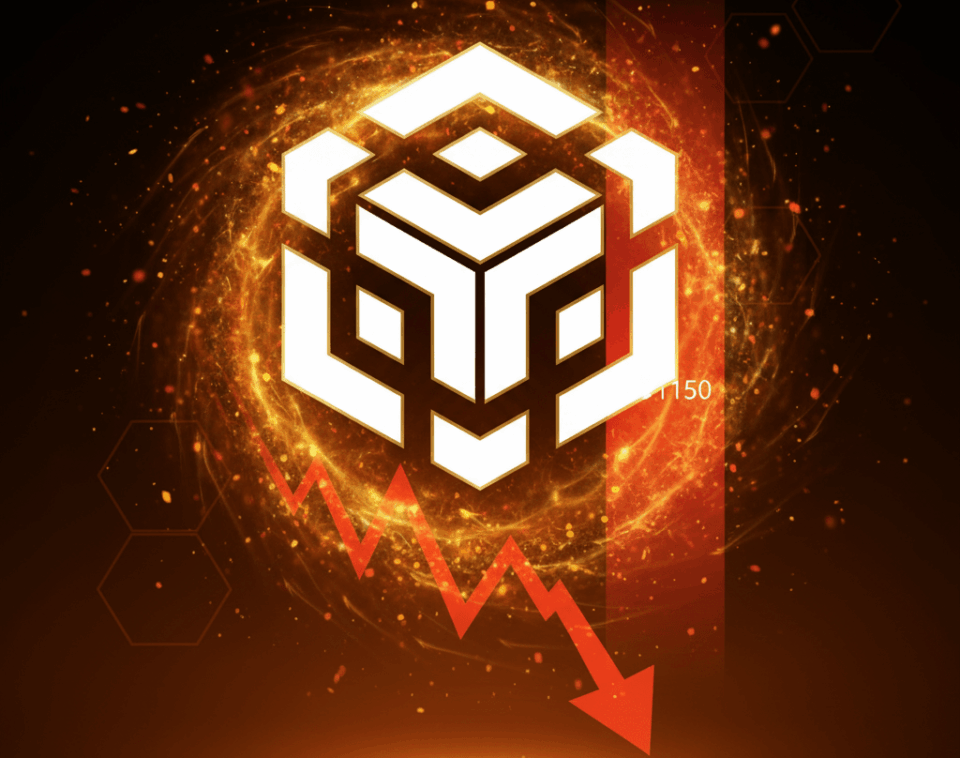The price of BNB fell notably in late October 2025. This occurred just after its 33rd quarterly token burn. The event, managed by Binance via its “Auto-Burn” system, removed 1.44 million BNB (valued at $1.65 billion) from circulation. However, the BNB burn fails to boost price, challenging typical market expectations.
The “Auto-Burn” mechanism reduced the total circulating supply to 137.7 million BNB. This action is part of the token’s programmed deflationary policy. Despite the scale of the burn exceeding $1.65 billion, the price did not react upward. Instead, the price showed weakness following the official announcement. Technical analysts now point to a strong resistance zone near $1,150.
Token burns aim to increase scarcity and, theoretically, the asset’s value. However, this event shows that simply reducing supply does not guarantee a rally. The prior technical context was already bearish. BNB had registered a “double top” pattern near $1,300. Furthermore, it experienced a 32% drop on October 10, taking it below the $900 level. Despite this, the fundamental use of the network remains solid, with 1.2 million active wallets registered in the first quarter.
Is Real Demand Stronger Than Programmed Scarcity?
The market’s response underscores the importance of current demand. Boosting prices requires new buyers to appear and the general context to improve. The drop affects traders, especially those operating with leverage, increasing volatility. This situation tests the token’s economy in the short term. The burn is a long-term signal of issuance policy. Its real effects may take weeks or months to be reflected; they do not have a guaranteed immediate impact.
The 33rd BNB burn is a significant deflationary milestone. Nonetheless, the price remains pressured by technical factors and general market sentiment. BNB needs to overcome the $1,150 resistance to show a trend change. Meanwhile, attention is focused on whether the usage demand for the BNB Smart Chain can counteract the current selling pressure.

